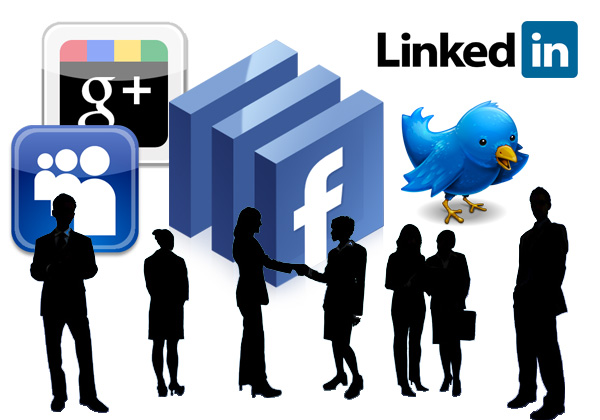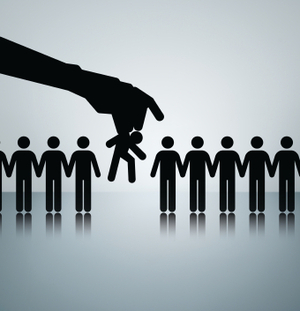Leaders and professionals in human resources can benefit from understanding omnichannel communication. This is an emerging strategy in other disciplines, such as marketing, that can improve customer satisfaction numbers and repeat purchases.
In HR, omnichannel communication can similarly satisfy your internal customers: employees. This strategy can improve your culture and employee engagement, which can make your organization more successful in the long-term.
What Is Omnichannel Communication?
Omnichannel communication is not just for sending messages in several ways, as multi-channel communication does in advertising. Instead, omnichannel communication is a strategy that aims to continue ongoing conversations with customers in all the places they communicate, research, order products, and interact with us.
Here’s an example. Imagine your customer is searching for a product on his smartphone. He finds you through an online search and then adds your product to his online shopping cart.
Then, he goes to his computer. He chats with a customer service rep on Facebook Messenger. He receives a quote through email. He completes his order. On the phone, he then talks to someone at your retail location about their hours and procedures. Finally, he drops by to pick up his product. The clerk has all his information on a computer screen there.
The best part? All of this is seamless. His information is never lost. His entire customer journey is stored in a centralized database and handed off between different communication methods and touchpoints. He feels that the company always remembers and respects him. He is able to conveniently ask questions, reach employees, and complete orders using whatever channels are comfortable and/or convenient to him.
What Does This Mean in HR?
We need to take these lessons about convenience and satisfaction that we employ for external customers and apply them to our internal customers. Wouldn’t we want our internal customers to feel the same way as our satisfied shopper did above?
Plus, with companies today having dozens, hundreds, or even thousands of employees—and some of those distributed over wide geographical areas—we have an increasing need to be sure they receive updates, get questions answered quickly, have their vacation requests verified, get meetings scheduled, and much more. And they should do all this through whatever channels are available to them.
If your employees are on their phones in the kitchen, they shouldn’t miss an important announcement that affects their work. If they switch from Facebook Messenger to either email or a phone call, all their information from the ongoing conversation should be saved and usable to continue their inquiry.
This level of convenience matters just as much to our internal customers as it does to external customers. Plus, our own employees are the heart and soul of our companies. We need them to be productive, not confused or frustrated with communication channels.
Also, you need your own HR department to have time to do important work. And this type of system could save your HR staff members time they might waste writing down the same information in several different applications, searching for data in separate systems, and performing routine tasks that could be easily automated.
7 Ways to Implement Omnichannel Communication in HR
You can use one or several of these seven lessons (adapted from omnichannel marketing efforts) to upgrade to an omnichannel communication system.
- Create Consistency: Ensure that your employee’s current inquiry information stays saved and available even when she switches between channels. As much as possible, keep the formatting of information similar between channels, so that it’s easy for her to find what she wants.
- Refresh Constantly: Update employees’ information across every channel in real time to allow the customer journey to continue on any device or in any other channel.
- Map the Employee Journey: Your employees commonly go through several steps during processes such as onboarding, requesting leave, scheduling an appointment with a supervisor, registering an HR complaint, and others. Using pen and paper or a computer application, draw out the various communication channels and applications employees use during each one in order to better understand any hiccups in the process—and improve the experience for them.
- Analyze Channel Use: Survey your employees and use analytics programs to find out how much time your employees spend using each channel, what they use each one for, and why they get frustrated with certain channels and abandon them. Create a list of ways to improve any sticking points you find.
- Improve Messaging: Many employees want the option to maintain a conversation within a messaging application on their smartphones instead of talking on the phone or waiting for an email. Spend time ensuring your messaging is well-integrated with your other channels and the central database.
- Give HR a Dashboard: If an employee does walk over to the HR office or call in, your HR representative should have every previous interaction—from all channels—visible in one convenient dashboard on her desktop computer. She should be able to fully catch up to the employee’s inquiry.
- Automate: Make routine tasks faster for your HR team and for employees by turning them into automated processes. For example, there are communication suites available that allow employees to request their holiday leave by sending short text messages.
Attract and Keep Employees
You’ve probably seen that most employees enjoy collaboration, which requires excellent communication. In a survey from 2014, seven in ten employees stated they would seek a midsize firm over a larger firm just to enjoy better communication. This shows that improving your communication practices could improve your employee retention—and even your ability to attract talent.
Whatever size your organization is, your employees (including HR staff) can benefit from seamless omnichannel communication methods. These can make employees more productive, give HR more time for high-level tasks, and keep employees more engaged on the job. Let’s treat our employees just as well as we treat customers. Remember, your employees could be with you even longer.
Latest posts by Annabelle Smyth (see all)
- How to Create a Culture of Innovation - November 18, 2021
- The Growing Need for Omnichannel Communication: What HR Professionals Need to Know - November 10, 2020
- 3 Types Of Questions To Help You Hire The Right People - December 13, 2017













